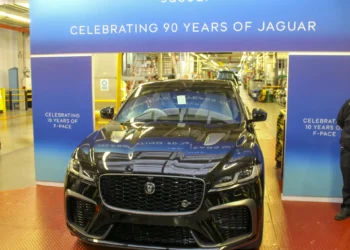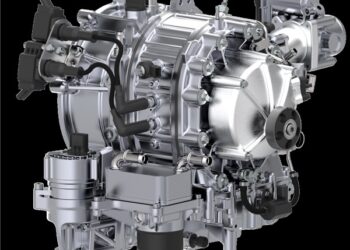Concept cars often promise the impossible—unbelievable power, sci-fi technology, and futuristic flair, only to remain unattainable dreams. But Lotus has done something different. The Lotus Theory 1 is not just another far-fetched concept, it’s a real indicator of what’s to come. Loaded with innovations that actually work, the Theory 1 is a nod to the past with its eyes firmly set on the future.
Ben Payne, Lotus Group Design Vice President, shared the philosophy behind the Theory 1, explaining how the brand draws inspiration from its iconic history. Payne emphasized the importance of balancing the legacy of Lotus with cutting-edge innovation, saying, “You can’t ignore the past… It’s extremely important we don’t just do something that looks beautiful. It needs to have a genuine story behind it.”
The Theory 1 takes cues from the legendary Lotus Esprit, with its sharp, wedge-like design, but it’s anything but retro. This concept car is packed with advanced tech, from a 1,000-horsepower electric powertrain to futuristic materials like recycled carbon fiber and cellulose composites. It even sports active haptic fabric in the seats, capable of adjusting to driving conditions or alerting the driver to hazards with a tap on the shoulder.
Lotus, traditionally known for its lightweight, agile sports cars, faces a new challenge in the electric era—how to keep that spirit alive in heavier, more complex EVs. Payne is candid about the balancing act: “The subject of weight is something everyone comes back to… But you have to deliver efficiency in weight, performance, and practicality.”
Despite its tech-heavy design, the Theory 1 stays true to Lotus’ ethos of simplicity. Payne and his team have adopted a “start from nothing” approach, adding only what’s necessary. This principle is reflected in every detail, from the 3D-printed headrests to the active fabric that serves multiple purposes while keeping the car as light as possible.
Inside, the Theory 1 is all about innovation. The driver’s seat is centrally placed, with two passenger seats set back on either side. The pedals and steering wheel move toward the driver in silence, adding to the car’s futuristic vibe. The seats are integrated into the carbon-fiber tub, and the padding itself is a technological marvel, adjusting its form in real-time based on driving conditions.
Lotus also aims to make its mark in sustainability. The Theory 1 incorporates eco-friendly materials like recycled glass and carbon fiber, as well as cellulose composites in the bodywork. This commitment to innovative materials is reminiscent of the pioneering spirit that defined Lotus in the past.
While the Theory 1 won’t go into production, its technologies and design elements are set to influence future Lotus models. As Payne put it, “We listen to the feedback… We’re an agile enough company to listen to what people say.” As Lotus moves forward with its EV lineup, the Theory 1 shows how the brand is blending the past and future to create a new era of supercars that not only perform but push the boundaries of technology and design.
In a world where many concept cars are mere fantasies, the Lotus Theory 1 stands as a bold statement of what’s possible—and what’s coming next.










